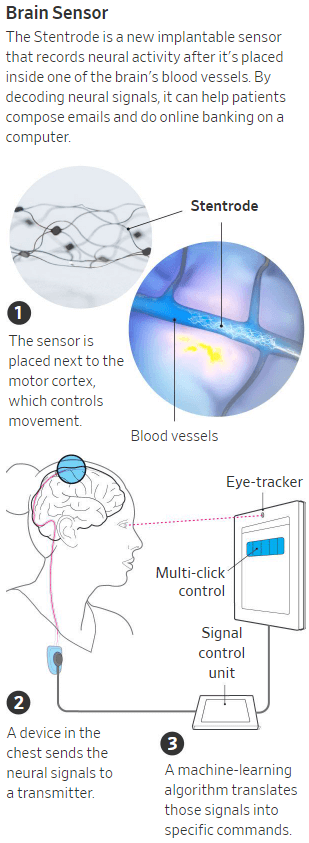Mr. O’Keefe, 60 years old, is one of a small number of patients with mobility issues testing [Synchron’s] new system, part of a wave of brain-sensing technology that aims to allow people immobilized by disease or injury to handle daily tasks requiring movement. In 2015, he was diagnosed with amyotrophic lateral sclerosis, a neurodegenerative condition commonly known as ALS.
Companies and academic labs around the world are racing to build next-generation devices and artificial intelligence that can monitor and decode brain activity.
Mr. O’Keefe, who lives near Melbourne, had the Stentrode device implanted in April. Once the wound in his chest healed, the training began.
The mouse-click action was calibrated to his left ankle because that sent the strongest signal from his brain to the device, he said. He uses separate eye-tracking technology to move the cursor. During the first training session, creating and sending an email took him four hours. Now he says he can do that in minutes.
































